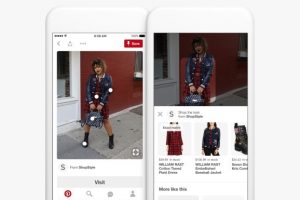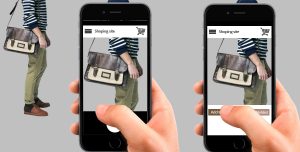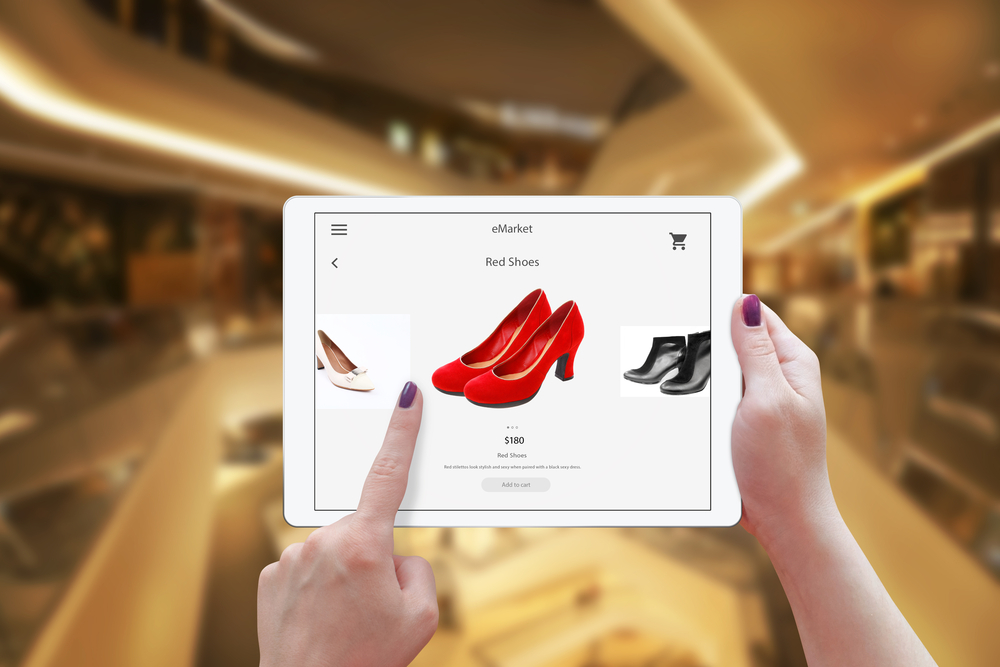Visual Search, a Game Changer in Fashion Retail8 min read
Table of Contents
The distinct ‘hiss’ of food touching a hot pan, the sound of bubbles fizzing through a glass of cola, the unmistakable smell of cookies baking in the oven, the sight of spring flowers in full bloom…there’s no two ways about it- humans are sensory beings. It is only natural, then, that the next wave of evolution in retail should come in the form of appealing to the senses.
In some ways, a sensory experience has always been part of the retail experience. Even with the advent of e-commerce, if people choose to buy in stores or at least explore a product in a store, it is because of the way we can experience a product in all its essence when we’re able to touch and feel it.
This also brings us to the fact that not everything we perceive can be translated into words. For example, just how do we describe the sheer elegance of a Hermes’ Birkin, dyed in shades of cream to represent the snow-clad peaks? You’d have to see it, after all, to really know what we mean.
This is where visual search comes in. For one, if you were to upload a picture of said Birkin bag, you’d be able to see all of the products in the catalog that closely match this one. Also, if you were to type in ‘Himalayan dyed Hermes bag’, a visual search tool would give you the closest possible result to what you’re looking for.
What is visual search all about, and how are brands using it successfully? To understand this, we need to delve deeper into the nuances of a visual search tool, and the nature of sight itself. Let’s begin!
Behind The Meteoric Rise Of Visual Search

A 2017 Moz report claims that 27% of all searches are visual in nature, and that was two years ago. While keywords still make up over 60% of all searches, that can probably be attributed to the fact that until now, we haven’t had any other ways of searching for things.
Plus, as the visual search capabilities get better and people begin to receive more accurate results for their searches, the number of queries run through this interface will only increase.
What’s more, a survey by The Intent Lab said that visual information is preferred over text by at least 50% of respondents in all categories except for electronics, household goods and wine and spirits.
This makes sense- today, most product discoveries happen on a mobile device, so it is more intuitive to be able to quickly snap a picture of an outfit and look for similar ones on a platform of choice.
The proof, as they say, is in the money pudding- as of this year, the image recognition market is worth USD 25 billion, and in two years from now, brands that incorporate visual search into their website are likely to grow their online revenues by over 30%! Consider this in the context of any retail business- H&M made USD 25 billion in revenues in 2018, and 30% of that is still a remarkable 7.5 billion dollars. Looking at it another way, that many more prospects are likely to find what they’re looking for more easily, and thus complete a purchase, when a visual search is involved in the sales process.
There’s also the fact that visual search is language agnostic, which helps brands immensely when they move into new geographies. Suddenly, the need to reclassify and categorize an entire catalog is gone and is replaced instead by a visual that everyone understands irrespective of what language they speak.
Neiman Marcus, for example, allows customers to snap a picture of what inspires them from within the shopping app, and look for similar items in their product catalog. That eliminates several futile searches and visits to a store to ‘find’ what you’re looking for and instead replaces it with a simple, personalized search result that is closest to what you have in mind.
Why Visual Search Is Such A Successful New Kid On The Block

The numbers prove that visual search is the next new wave in fashion retail, but what makes it click?
Back in the 1970s, Daniel Kahneman was a behavioural scientist who served as an advisor to the Israeli forces. While a presentation was made with enough numbers to convince anyone that an attack by Egypt was imminent, top leaders on this side of the border chose to go with their gut, thus precipitating one of the bloodiest wars in the region.
This gave him an epiphany that many retail brands use today- statistics don’t sell, stories do. This is because most human beings, while thoroughly rational under all circumstances, usually resort to intuition when the time comes to make a decision. This explains why we grab a bar of candy at the checkout aisle, or why we are more likely to buy when the staff pays us a compliment. At the end of the day, we don’t think about the product’s features as much as we consider how it makes us feel.
This aspect gives visual search the ability to make a powerful impact on our choices- since it starts with an image (or descriptive attributes) that we are already in favour of, it eliminates the deliberation phase. Plus, it allows retailers to show products that are the closest match to the image, thus giving us few to no excuses to find fault with the product. In other words, visual search encourages us to buy into an idea that we are already in love with!
Here are 4 reasons why visual search just clicks.
1. Reduces the number of options
It reduces the number of options shown, and thus decision fatigue. This can seem very counterintuitive at first. After all, isn’t every retail store built on the premise of browsing through as many products as possible before choosing? But as we dive deeper, we see that shopping cart abandonment are still a real problem, and liking products is no guarantee that a customer will buy them.
This is why Forever 21 believes that at the discovery stage, less is more. Customers can search for products on its site beyond the basic attributes. The likelihood of finding a product closely matching their preferences is much higher because search parameters can be narrowed down even to the type of sleeve and collar.
An AI interface skims through the entire catalogue to find products that are as close as possible to the image, or the attributes, specified by the customer.
2. Improves the Customer Experience
It also improves the customer experience significantly. By bringing visuals into the picture, customers shopping online do not have to miss out entirely on experiencing the garment before buying it.
Moreover, they can choose to snap a picture of anything they spot in any retail store, upload it to their shopping destination of choice and instantly find similar product recommendations.
This helps increase brand loyalty in a world of distractions- whenever customers spot something nice, they are far more likely to use their own preferred shopping platform to buy it from, because of the ease of looking for a product.
3. Help Refine Their Catalog
For a retailer, visual search can help refine their catalog based on items that are most popular, spend less on ads for popular products, divert resources to marketing other products and so much more. The data obtained from visual search can be used as a business intelligence tool in making key decisions about inventory.
4. Personalization
From a customer’s perspective, no two people see the same catalog. Instead, everything they view is personalized (personalized search)based on their past browsing history, images they have liked, and other background elements that complement the current search result.
This helps retailers steer search away from being a micro-moment, and instead use every piece of information of a customer to customize their feed. As we’ve seen earlier, too many generic search results are a problem. Instead, a collection curated for a customer has a far better chance of getting sold successfully.
The Ins And The Outs Of Visual Search for retail
Today, any retailer looking to gain the first-mover advantage in the visual search space would be looking for a tool even as you read. This makes sense because the rate of adaptability for any new technology in retail varies wildly, but customer expectations are set based on the highest benchmark in the industry at that point.
However, for any retailer who is willing to take the bold step into the future of retail, loyalty is sure to come in the form of more customers, and more revenues from those customers who are relatively new to the buying game- the millennials and Gen Zers. It is only a matter of time before the visual search, too, becomes the norm in retail. But the ones who start the race early stand to gain immensely in terms of customer loyalty, better experiences and steadier revenues.
Read More About Automated Catalog Management Solution



